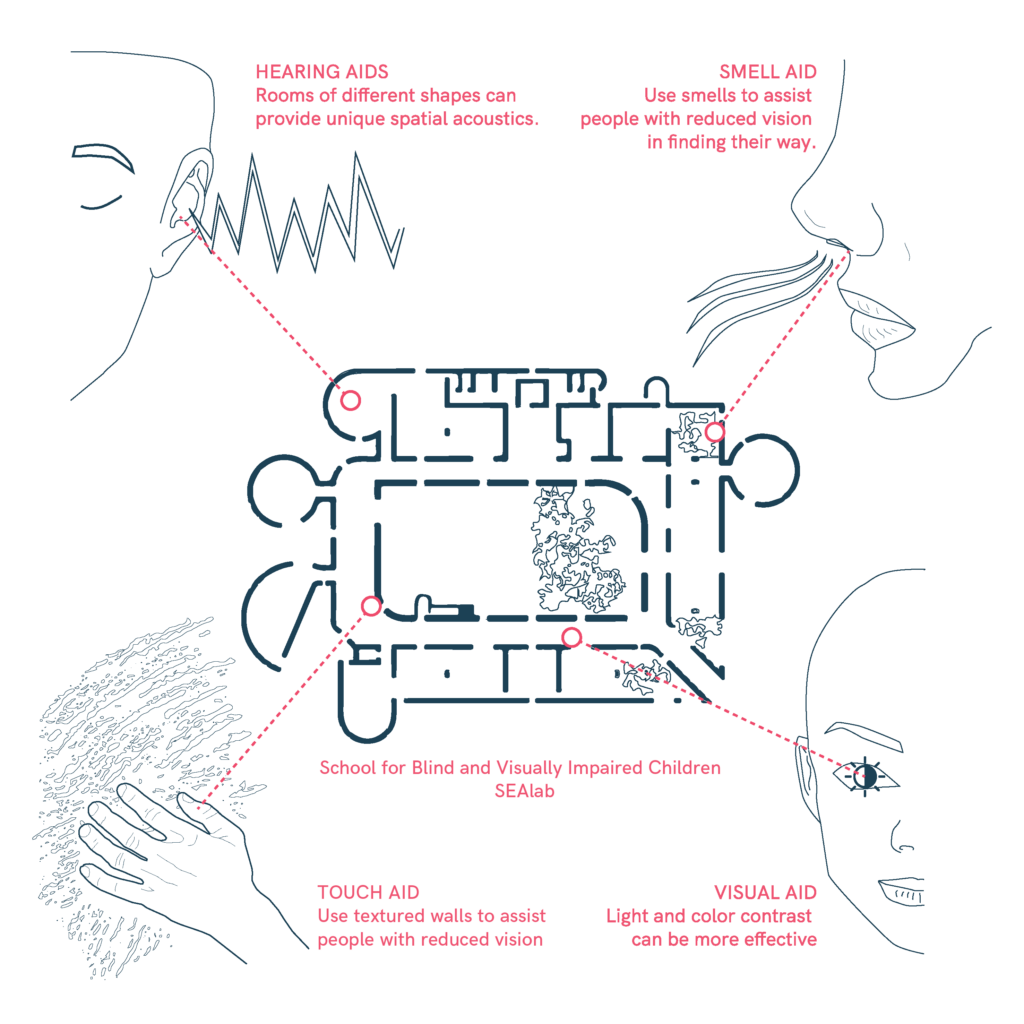Multisensory Navigation and Spatial Orientation
Designing spaces that engage multiple senses enhances intuitive navigation and accessibility for all users. This approach is especially beneficial for individuals with visual impairments or cognitive differences, as it provides alternative ways to perceive and interact with the environment. Clear spatial organization, tactile elements, and strategic lighting improve wayfinding, while auditory and olfactory cues create additional reference points. Simple geometric layouts with distinct spaces contribute to orientation, making movement within a space more predictable. By incorporating sensory elements, environments can become more inclusive, ensuring that everyone can navigate safely and independently.

- Incorporate multiple senses, such as sound, smell, and touch, to aid navigation. Example: Use textured walls to assist people with reduced vision in finding their way.
- Use simple geometry with distinct spaces to enhance orientation, such as rooms of different shapes that provide unique spatial acoustics.
- Employ clear signage, as well as visual and tactile cues, to guide users. Example: Light and color contrast can be more effective than traditional signage for those with low vision.
- Integrate auditory or olfactory markers, such as soft background sounds or subtle scents, to reinforce spatial awareness.
- Involve users in the design process through co-design and feedback sessions, ensuring accessibility needs are met effectively.
- Consult here more about wayfinding: Cognitive signage and orientation to help users navigate spaces.
Sources
- https://www.sea-lab.org/School-for-blind-and-visually-impaired-children
- https://accessible-eu-centre.ec.europa.eu/content-corner/digital-library/en-172102021-accessibility-and-usability-built-environment-functional-requirements_en
- https://www.miteco.gob.es/fr/ceneam/recursos/materiales/guia-diseno-entornos-escolares.html
- https://www.codigotecnico.org/pdf/Documentos/SUA/DccSUA.pdf
- https://www.cocemfe.es/wp-content/uploads/2020/02/Guia-basica-accesibilidad-centros-educativos.pdf
- https://www.oficinadeaccesibilidaduniversal.es/doc/educativa/centros-educativos/Accesibilidad%20cognitiva%20en%20centros%20educativos.pdf
- https://afaunamuno.org/wp-content/uploads/2023/02/Criterios-Intervencion-EE-30Mar_22.pdf
